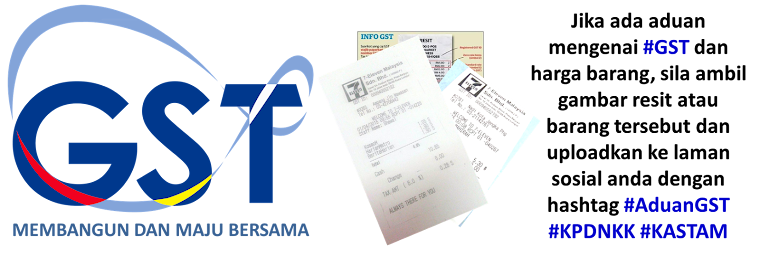Published: Tuesday October 29, 2013 MYT 12:00:00 AM
Updated: Tuesday October 29, 2013 MYT 6:33:45 AM
THE long-awaited goods and services tax (GST) has at last come knocking at our doors and many predicted that the rate will be set between 6% and 10%, the former being the current service tax rate while the latter is the sales tax rate.
The expectation was that the GST will be 4% on the assumption that the rate will be revenue neutral. That is, the revenue from the GST will just offset the revenue lost from the repeal of the sales and service tax (SST).
There is always a risk in introducing an unpopular tax. The fear is that the GST may shrink consumption and, consequently, stall growth if consumers take fright.
When a 2% rise in a similar value-added tax (VAT) took the rate to 5% in Japan in 1997, the nation slipped into a recession.
With our economy expected to post a modest 5% growth, the risk of a recession is negligible. More so, government expenditure is expected to remain stable, if not increase as the year wears on.
Reduction in personal income tax, the RM2,000 tax relief for those with monthly incomes of up to RM8,000 and the RM300 for households who are BR1M recipients, should have the Keynesian effect of increasing the overall propensity to consume in the economy. Such increased consumption should spur economic growth and further fill the government coffers through the GST.
Will the GST bring in the expected increase in government revenue? We consider that at the proposed rate of 6%, the impact on the government’s treasury will be minimal. Let us do the maths.
The total amount of goods and services that will be subjected to tax often range from one-third to one-half of the GDP. The 2014 Budget outlines massive exemptions from the GST. These include 40 essential food items, public services, public transport, highway toll, sale and lease of residential property, private education, health, electricity, water and selected financial services.
Some products will only attract half the GST rate. Also, some 80% of businesses, that is those with sales of less than RM500,000, will be excluded from the GST system.
So, it is fair to adopt a base of one-third. With GDP at RM1,051bil (accounting for the 5% growth rate), a GST of 6% will raise RM21bil in tax revenue. This may seem as a lot of money. But offset that against the loss of RM16bil from the sales and services taxes (SST), the amount will be RM5bil.
In keeping with international practices, the government has brought down corporate and personal income taxes. There are now a 1% slash of corporate income tax rate and a 1% to 3% reduction in individual income tax rate. Additionally, the chargeable income subject to the maximum marginal tax rate has been increased from exceeding RM100,000 to exceeding RM400,000.
All these reductions will conservatively shave off RM1bil from the RM127bil revenue from corporate and individual income taxes. The proceeds from the GST will then only amount to RM4bil or 2% of the total government revenue. Nevertheless, it will reduce the fiscal deficit by 11%.
However, the GST has the potential to gain more revenue as the rate is increased in the years to come. This gradual increase of the GST has been the norm among one-third of the countries applying a similar consumption tax. Even with cuts of 1% in corporate income tax rate to 24% and the reduction of the maximum personal income tax rate to 25%, the rates are nowhere near those of Singapore. There, the corporate tax rate is 17% while the maximum personal income tax rate is 20%. These rates are among the lowest in the world. Even the cash-starved UK has proposed to reduce its corporate tax rate to 20% by 2015; although one must hasten to add that the VAT in the UK is 20% on most goods.
Thus the presumption is that the government will continue to cut the direct income tax rates even as it increases the GST in the future.
The GST at 6% is an acceptable start. Its impact on government coffers will only be significant when the rate is increased gradually in the future.
Assuming all things are constant, the real impact on government revenue will be felt at 10%, which is the maximum rate in Asean. At that rate, the GST will draw in RM19bil after factoring in the RM16bil lost from abolishing the SST, and halve the budget deficit.
Then, we shall be within striking distance of a balanced budget by 2020. With a little belt-tightening we should by then be safely “home”.
PROF DATUK JOHN ANTONY XAVIER
Graduate School of Business
Universiti Kebangsaan Malaysia


No comments:
Post a Comment